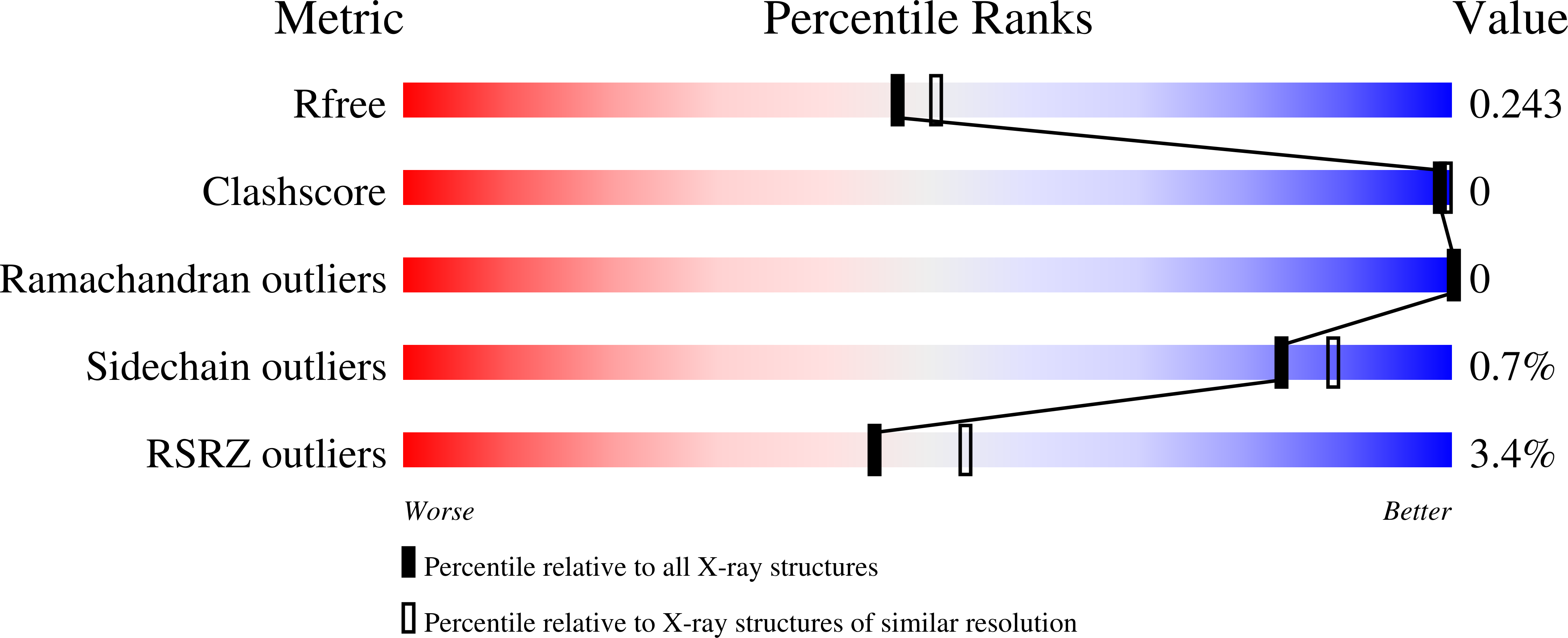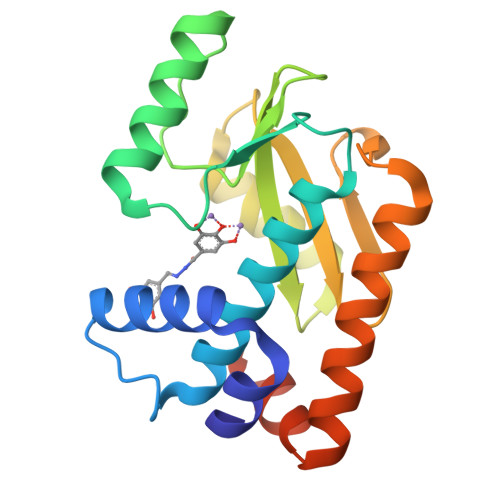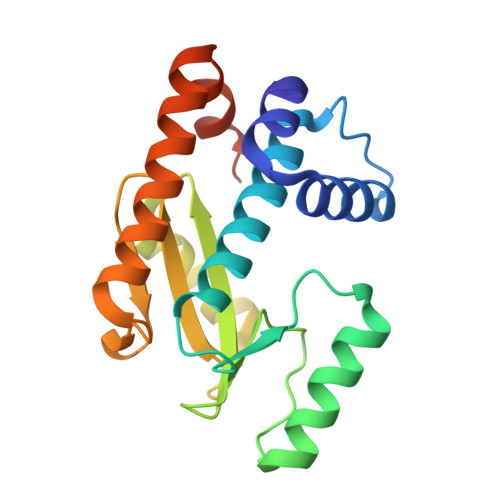N-acylhydrazone inhibitors of influenza virus PA endonuclease with versatile metal binding modes.
Carcelli, M., Rogolino, D., Gatti, A., De Luca, L., Sechi, M., Kumar, G., White, S.W., Stevaert, A., Naesens, L.(2016) Sci Rep 6: 31500-31500
- PubMed: 27510745
- DOI: https://doi.org/10.1038/srep31500
- Primary Citation of Related Structures:
5EGA - PubMed Abstract:
Influenza virus PA endonuclease has recently emerged as an attractive target for the development of novel antiviral therapeutics. This is an enzyme with divalent metal ion(s) (Mg(2+) or Mn(2+)) in its catalytic site: chelation of these metal cofactors is an attractive strategy to inhibit enzymatic activity. Here we report the activity of a series of N-acylhydrazones in an enzymatic assay with PA-Nter endonuclease, as well as in cell-based influenza vRNP reconstitution and virus yield assays. Several N-acylhydrazones were found to have promising anti-influenza activity in the low micromolar concentration range and good selectivity. Computational docking studies are carried on to investigate the key features that determine inhibition of the endonuclease enzyme by N-acylhydrazones. Moreover, we here describe the crystal structure of PA-Nter in complex with one of the most active inhibitors, revealing its interactions within the protein's active site.
Organizational Affiliation:
Dipartimento di Chimica and Consorzio Interuniversitario di Ricerca in Chimica dei Metalli nei Sistemi Biologici, Università di Parma, Parco Area delle Scienze 17/A, 43124 Parma, Italy.




















